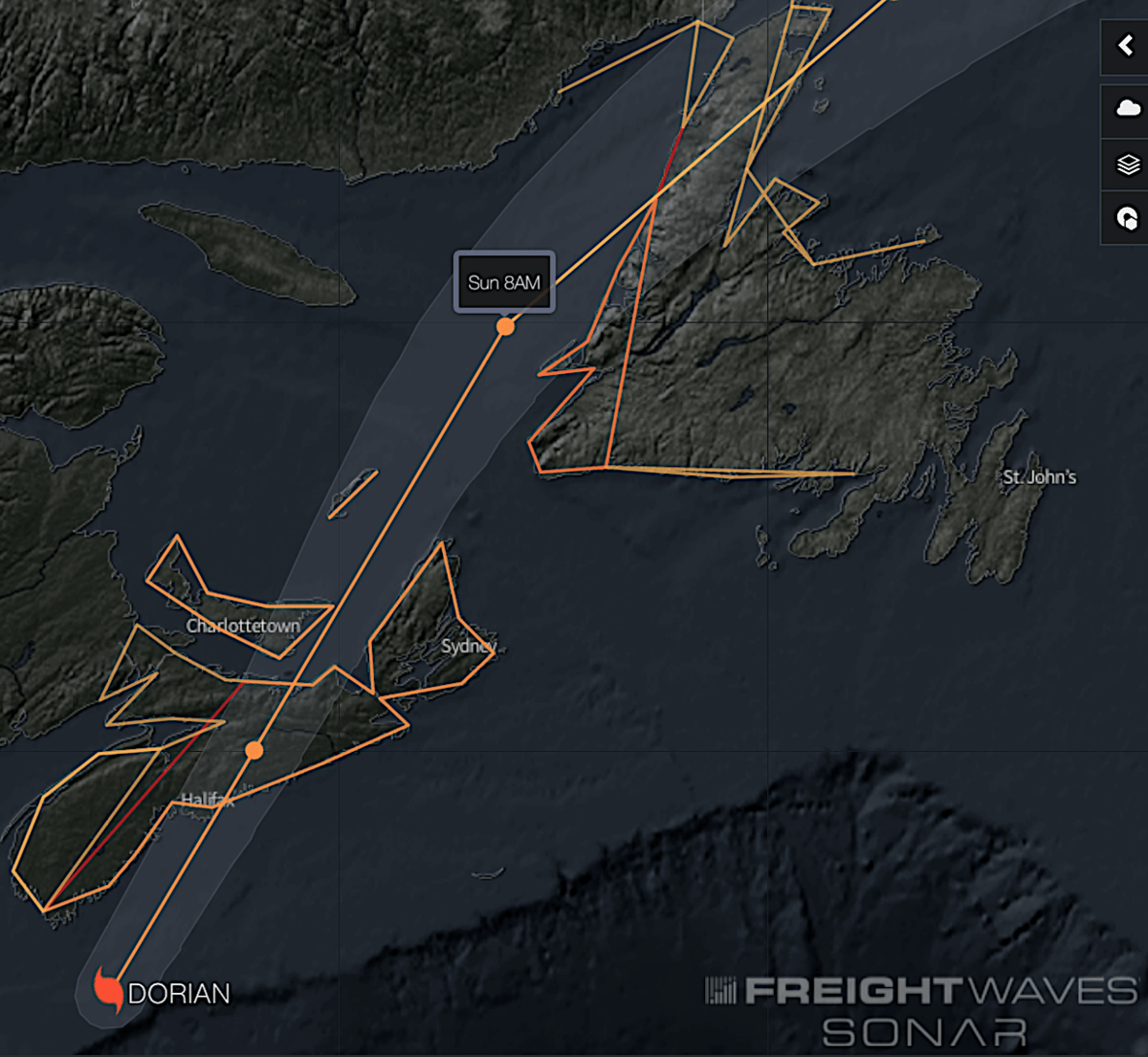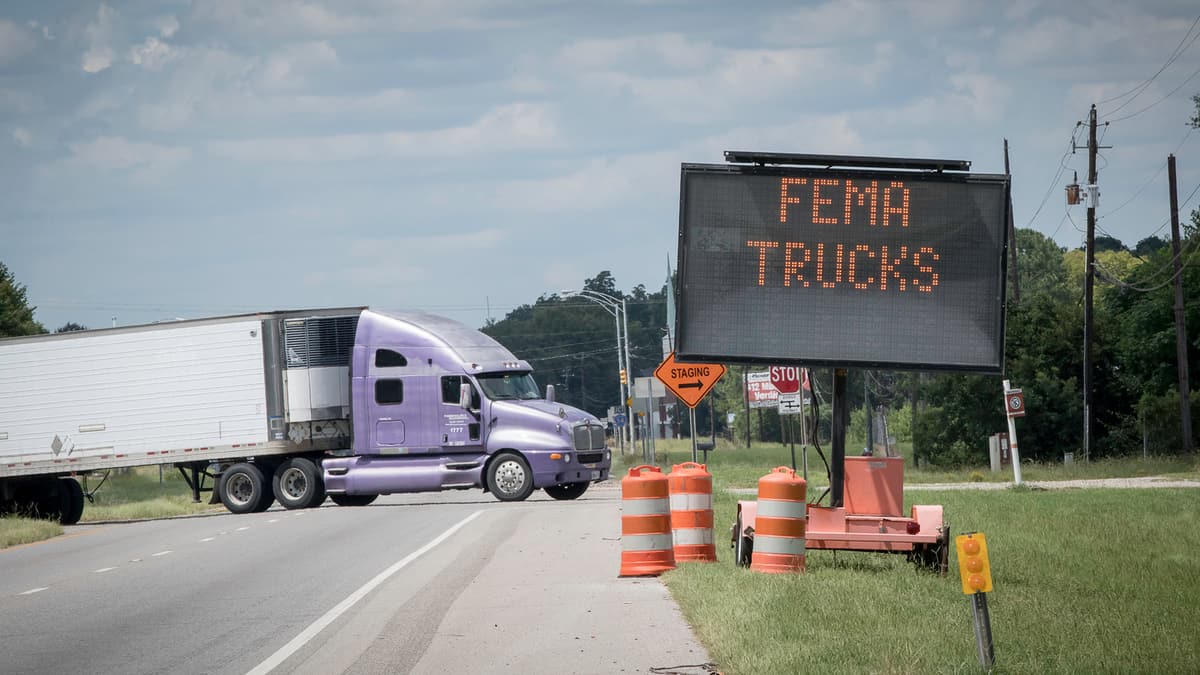The remnants of Hurricane Dorian battered southern Nova Scotia as the downgraded but still dangerous storm left 300,000 people without power, felled trees and dramatically brought down a construction crane in the downtown of the port city of Halifax.
The core of the storm, now classified as a “very intense post-tropical system” by the Canadian Hurricane Centre sat just south of Halifax as of 7:15 eastern time on Sept, 7. Authorities expected Dorian to move north during the evening. So far there were no reports of injuries.

Police advised motorists to stay off the roads if possible. Up-to-date information about Dorian and traffic conditions are also available on the FreightWaves SONAR platform.
Meanwhile, conditions were deteriorating near the coast. “Vessels, infrastructure, and equipment are at risk of damage in areas directly exposed to high waves and pounding surf. Mariners are advised to avoid affected shorelines,” the federal weather service warned.

Dorian will continue over the Gulf of Saint Lawrence as a “potent” tropical storm into Sept. 8. The storm will affect a large swath of the region, including parts of Quebec, but not the Trans-Canada Highway – welcome news for truckers.
Preparations at the port
At the Port of Halifax, scheduling remained “fluid,” with some vessels coming ahead of Dorian and others delaying their arrival until after the storm passes, said port spokesman Lane Farguson on Sept. 6, who did not provide details on the delays.
“We are watching the path of this storm closely and at this stage, procedures are being reviewed, preparations are being made and tenants are being contacted,” Farguson wrote in an email. “Safety is our top priority.”
The port has advised that piloting would be done on a case-by-case basis. The port and terminal operators have completed physical checks of the facilities and moved equipment and cargo away from the pier while securing anything that can’t be moved, Farguson wrote.











